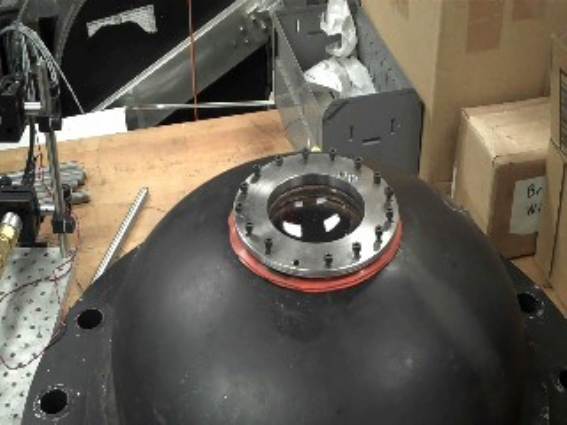Sun + air = solar-powered electricity at SDSU
 Researchers at San Diego State University (SDSU) are developing a concentrating solar power (CSP) technology that superheats air to power a generator. The technology is being developed as an alternative to water-based CSP systems, which need water sources, despite the fact that their ideal location is in the desert. The technology has been tested at SDSU and now the group, led by Assistant Professor Fletcher Miller, a former NASA scientist, is scaling up the technology with the help of a $3.9 million grant from the Department of Energy’s SunShot Initiative.
Researchers at San Diego State University (SDSU) are developing a concentrating solar power (CSP) technology that superheats air to power a generator. The technology is being developed as an alternative to water-based CSP systems, which need water sources, despite the fact that their ideal location is in the desert. The technology has been tested at SDSU and now the group, led by Assistant Professor Fletcher Miller, a former NASA scientist, is scaling up the technology with the help of a $3.9 million grant from the Department of Energy’s SunShot Initiative.
The technology Miller and his team, which includes undergraduate and graduate students, are using carbon nano particles to make the thermal absorption process in air more efficient. “About 95 percent of the energy in the system comes from sunlight. That light is absorbed by the nano particles and converted to heat very efficiently. It makes it much easier to heat the air, compared to pushing the air through tubes as is traditionally done,” Miller said. The superheated air is used to power a turbine like a combustion turbine, rather than a steam turbine.
The carbon nano particles comprise the rest of the fuel mixture in the system and when the mixture goes through the turbine it burns. “The idea is to have the carbon nano particles burn to become CO2 (very small amount),” Miller said.
The resulting system will borrow technology styles from other solar power tower technologies, using a field of heliostats to concentrate solar on a receiver which heats, in this case, the air-carbon nano particle mixture. Unlike other CSP tower systems, however, this design uses a special glass pane to heat the fuel.
At this point the carbon nano particles being used in the process are produced by pyrolysis of natural gas as needed. “For the actual plant, we are considering both options, supplied and produced onsite. The choice will depend on cost, ease of entrainment and other factors,” Miller said.
With the grant from SunShot, Miller and his team, which also includes includes consultants from Rocketdyne, Solar Thermal Technologies and Solar Turbines, will move the technology into the field at the National Solar Thermal Testing Facility at Sandia National Laboratory in New Mexico. “They’ve got a five thousand to six thousand kilowatt testing facility,” Miller said. “It will be much different running it at that level than at the three kilowatts we’ve been testing at.”
They will design the large-scale solar receiver over 18 months and another building it. It will be tested for a year upon completion, according to SDSU.



